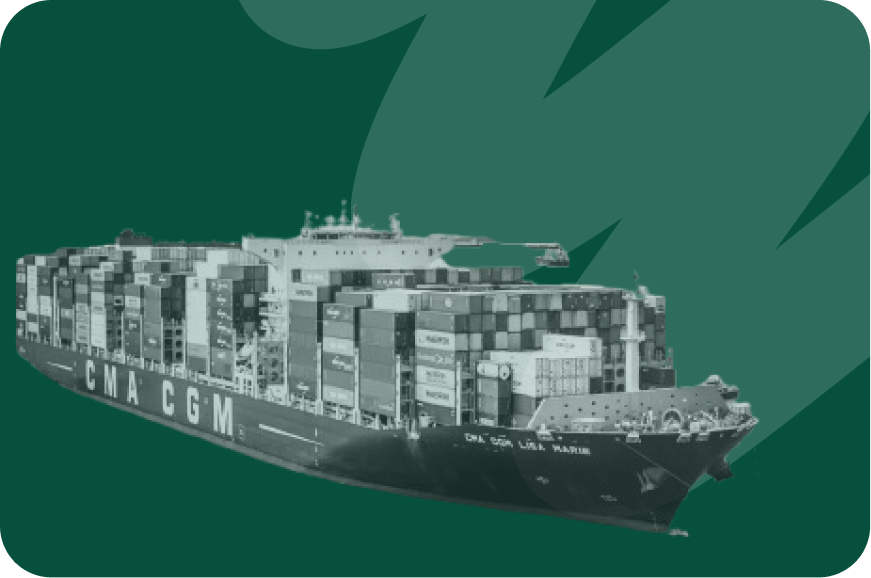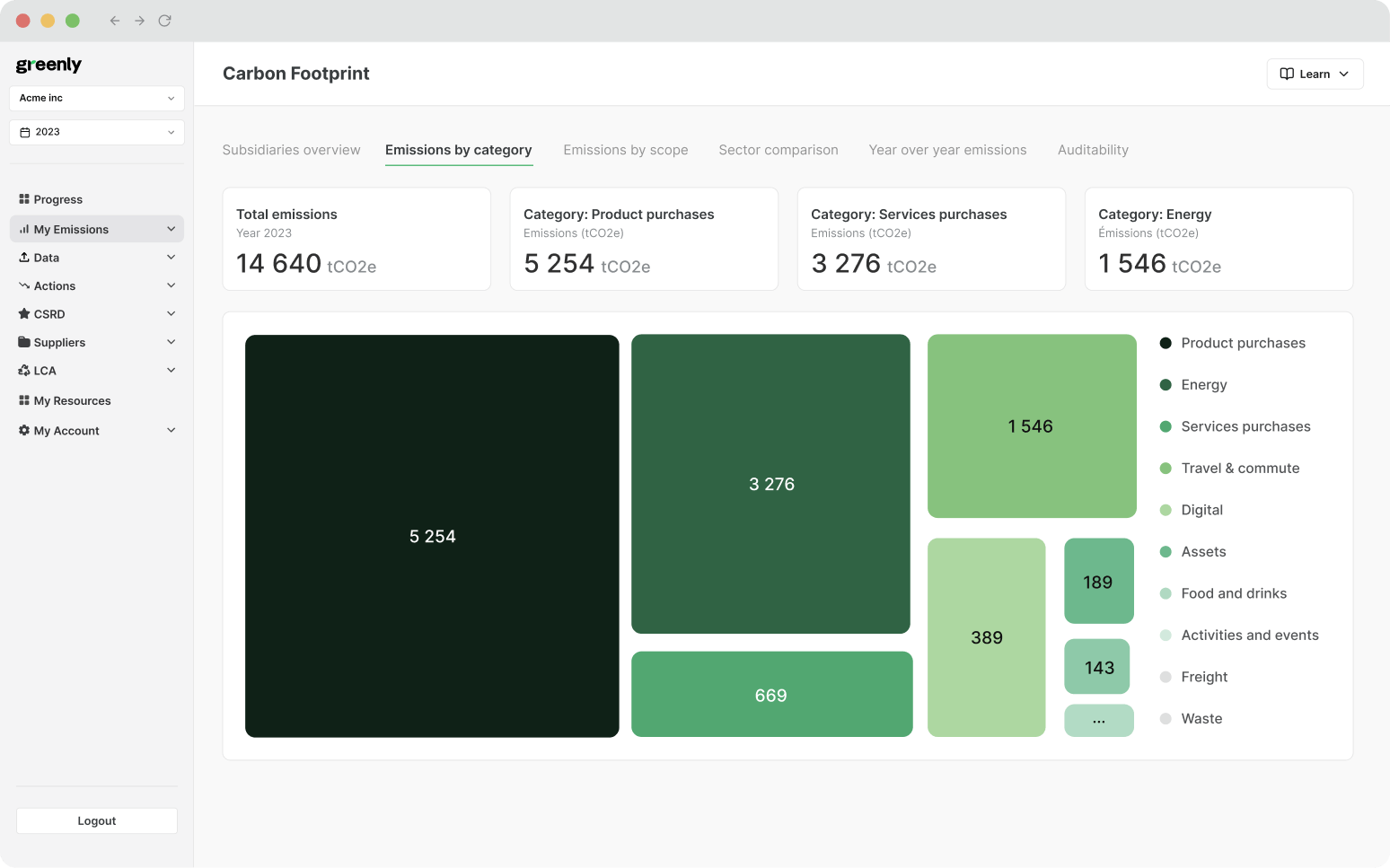
Sustainable Development Goals (SDGs): All You Need to Know
The United Nations has defined 17 goals, aimed at creating a better world. What are these so-called "Sustainable Development Goals" ? Explanations.
ESG / CSR
Industries



This vital waterway, linking the Atlantic and Pacific oceans, is facing an escalating water shortage. As temperatures rise and rainfall patterns shift, the canal’s ability to function at full capacity is under serious threat.
In this article, we explore how climate change is disrupting the Panama Canal’s operations and what steps are being taken to address the growing water crisis.
The Panama Canal is a 50-mile artificial waterway that connects the Atlantic and Pacific Oceans via the Isthmus of Panama, serving as one of the most strategically important shipping routes in the world. Its construction followed Panamanian independence, marking a turning point in both regional politics and global trade.
The idea of cutting a passage through the Isthmus of Panama dates back centuries, with a proposed canal first considered during the era of the Spanish colonies, but it wasn’t until the early 20th century that the vision became reality.
After a series of failed French attempts in the late 1800s - including a major French effort led by Ferdinand de Lesseps, the engineer behind the Suez Canal - the United States took over the project in 1903, shortly after Panama declared independence from Colombia.
Backed by U.S. naval support, Panamanian separatists prevented Colombian troops from reclaiming the territory, clearing the way for negotiations. The U.S. quickly struck a deal with the newly formed Republic of Panama to gain control of the canal zone. The move was strongly backed by President Roosevelt, who saw the canal as vital to U.S. strategic and commercial interests. Around this time, the Senate voted to approve the necessary funding and authority to begin construction.
Construction was gruelling. Engineers had to contend with mountainous terrain, including the notoriously challenging Culebra Cut, tropical disease, and logistical nightmares. Over ten years, workers excavated over 200 million cubic metres of earth and rock, and built an intricate system of locks to lift and lower ships across the canal’s varying elevations.
The canal officially opened in 1914, just as World War I was beginning. Beyond its engineering significance, it became a powerful symbol of U.S. influence and a linchpin of global trade for the century that followed.
Before the canal, ships traveling between the Atlantic and Pacific Oceans had to sail all the way around the southern tip of South America - a dangerous and time-consuming journey that added about 8,000 miles to the route. Depending on the ship and weather conditions, this detour could take an additional 20 to 30 days and cost hundreds of thousands of dollars in fuel, crew wages, and operational expenses.
Like the Suez Canal, which shortened the route between Europe and Asia, the Panama Canal was built to eliminate that detour, creating a direct maritime shortcut through the narrowest point of the Isthmus of Panama.
Its construction also had major geopolitical motivations. By controlling the canal, the United States sought to secure military and commercial dominance in both oceans, reinforcing its status as a global power in the early 20th century.
Spanning about 50 miles, the canal uses a series of locks - giant water-filled chambers that raise and lower vessels in stages to account for the difference in sea levels and the elevation of the canal’s inland lakes as it cuts through the continental divide.
Each vessel is assigned a transit schedule and typically passes through three sets of locks as it crosses the canal. These include the Gatun Locks on the Atlantic side, the Pedro Miguel Locks in the centre, and the Miraflores Locks on the Pacific side.
This core lock system consists of six chambers and relies on gravity-fed freshwater to move ships through the canal’s locks efficiently and safely. A separate set of new locks, added in 2016 as part of a major locks project, accommodates larger ships on an expanded canal route.
Transit fees are calculated based on several factors, including the type of vessel, its size, cargo, and weight. Costs can range from a few thousand dollars for smaller ships to several hundred thousand for large container vessels. In rare cases - especially during backlogs or drought conditions - ships have paid up to $2.4 million for expedited passage.
Under normal conditions, around 36 to 38 ships transit the canal each day. The canal is operated by the Panama Canal Authority (ACP), an autonomous agency of the Panamanian government, which assumed full control from the United States in 1999.
The Panama Canal depends on a stable supply of fresh water to operate. But as climate patterns shift, that supply is becoming less reliable. Climate change is altering rainfall cycles, raising temperatures, and increasing the frequency and intensity of droughts in the region, all of which reduce the water available for canal operations.
Here’s how these changes are disrupting the canal’s hydrological system:
Unlike canals that draw from the ocean or use mechanical pumps, the Panama Canal is powered by gravity and freshwater. Each ship that crosses the canal uses roughly 200 million litres of water, most of which is released into the sea after use. That water comes from Gatún Lake and Alajuela Lake, which are fed solely by rainfall.
This makes the system extremely sensitive to shifts in precipitation; any reduction in rainfall means less water to keep the canal running.
Panama has historically experienced heavy rainfall, especially during its May–December wet season. But across Central America, those patterns are shifting due to climate change. Rainfall has become more erratic, with longer dry periods and shorter, more intense downpours that are less effective at replenishing lakes.
In 2023, the canal watershed saw total rainfall drop by 30% compared to the historical average, with October alone recording 41% less rainfall than normal. This sharp decline affected nearly the entire wet season and reflects a broader trend that scientists link to rising global temperatures and shifting weather patterns.
As global temperatures rise, so do local temperatures in the canal zone. Warmer air increases evaporation from Gatun Lake and surrounding reservoirs. Even when rainfall occurs, more water is lost into the atmosphere before it can be stored and used. This intensifies the impact of dry periods, accelerating the drop in usable water levels.
El Niño is a natural climate phenomenon that causes the Pacific Ocean to warm and disrupts global weather patterns. In Panama, El Niño typically brings hotter, drier weather, making already dry seasons worse.
The 2023–2024 El Niño event, which lasted from June 2023 to May 2024, significantly reduced rainfall in the canal watershed, contributing to historically low water levels and prompting emergency operational restrictions.
While El Niño events are cyclical, climate change is increasing their severity and compounding their effects, making recovery between events more difficult.
By the end of the year, daily vessel traffic had been reduced from a typical 36–38 vessels to as few as 22, with some vessels waiting in the approach channel for days before being able to transit. While draft restrictions meant many ships could no longer carry full loads. The result was a backlog of vessels at either end of the canal, with some facing delays of up to three weeks.
To manage the growing demand for limited slots, the Panama Canal Authority introduced an auction system, which allowed shipping companies to bid for priority access. In some cases, prices exceeded $2 million per crossing. While the number of transits declined, the combination of higher toll rates and auction premiums meant that overall revenues for the canal actually rose in 2023.
Fewer ships and reduced cargo loads mean lost revenue for the canal, but they also come at a cost for shipping companies. With fewer available slots and limited capacity, carriers are facing delays, rerouting, or the need to charter additional vessels. These costs can ultimately be passed on to businesses and consumers in the form of higher prices for goods.
Increased waiting time in transit queues has also created significant bottlenecks. At the height of restrictions in late 2023, some vessels were delayed by up to three weeks, placing strain on just-in-time delivery systems and global trade flows.
The canal's water shortage also has knock-on effects for global emissions. As restrictions tighten, some vessels are choosing to reroute via Cape Horn at the southern tip of South America - a journey that adds over 8,000 nautical miles for routes like New York to San Francisco.
This detour has major environmental consequences. A trip around Cape Horn typically takes around 55 days, compared to 20 days via the Panama Canal, and leads to significantly higher fuel consumption. According to one study, large container ships on the Horn route burn 200–250 tonnes of fuel per day, while the same ship transiting the Panama Canal uses roughly 100–150 tonnes daily. This added fuel consumption can result in thousands of tonnes of additional CO₂ emissions per trip, significantly increasing the environmental footprint of rerouted vessels.
The result is a substantial increase in carbon emissions when ships divert to longer routes. Additional overland transport, used when cargo is offloaded on one side of Panama and transported across the isthmus by truck or rail, can also raise emissions, depending on the volume and distance involved.
After the severe drought of 2023 and early 2024, conditions at the Panama Canal have improved. Rainfall in early 2025 helped raise water levels at Gatun Lake to 86.5 feet by April, a strong recovery compared to the lows seen the year before.
In response, the Panama Canal Authority has eased many of the restrictions that were previously in place. Canal traffic is now back to around 36 vessels per day, in line with typical pre-drought levels.
In response to growing concerns over water security, the Panama Canal Authority (ACP) launched its Water Program in 2020 - a long-term initiative designed to ensure a reliable supply of both drinking water and operational water for the canal and nearby communities over the next 50 years.
Although water levels have stabilized in 2025, the droughts of recent years have underscored just how vulnerable the system remains. The Water Program combines short-term efficiency measures with long-term infrastructure planning to make the canal more resilient to future climate-driven disruptions.
The ACP has introduced a range of operational measures that can be deployed quickly when water levels drop. These include:
By reusing water between adjacent chambers, made possible by the central wall that separates the two lanes of the lock, this method reduces water use per transit, saving the equivalent of the average consumption from five daily ship passages.
When vessel size permits, two ships can transit a lock chamber together, conserving water by reducing the number of separate lockages required.
Transit times are carefully planned to group ships efficiently and reduce unnecessary water loss. This scheduling flexibility becomes crucial during extended dry periods.
The ACP provides regular updates on water levels and operational changes, helping shipping lines plan accordingly when restrictions are in place.
Beyond short-term mitigation, the ACP is investing in long-term infrastructure to safeguard water availability for decades to come. These efforts include:
A key part of this strategy involves expanding water storage capacity through the potential construction of additional reservoirs. These would help ensure a more consistent water supply during extended dry periods and support greater operational stability.
The ACP is exploring the use of more sophisticated tools to monitor, conserve, and manage freshwater resources, including climate modelling, improved forecasting, and potentially even desalination technologies.
Together, these efforts aim to ensure that the canal can remain fully functional even as climate patterns continue to shift.
One of the most debated components of the Panama Canal Authority’s long-term water strategy is the proposed construction of a reservoir on the Indio River. The $1.6 billion project would involve damming the river to create a major new water source for canal operations and the surrounding population, including Panama City, which also draws from the same watershed.
While the ACP argues that the project is necessary to strengthen water security in the face of future droughts, the plan has faced significant resistance due to its environmental and social implications. As of mid-2025, the controversial project remains under review, with construction not expected to begin before 2027.
The Indio River basin is home to rich and relatively undisturbed ecosystems. Environmental groups warn that damming the river would flood around 4,600 hectares of land, submerge forests, and disrupt delicate freshwater ecosystems that support fish, birds, and other native wildlife.
There are also concerns about how altering the river’s flow could impact downstream sediment transport and water quality, as well as long-term risks to biodiversity from habitat fragmentation and loss. Conservationists argue that the cumulative ecological cost of the project could outweigh its water-saving benefits, particularly given the canal’s already considerable environmental footprint.
Beyond the environmental risks, the project could displace more than 2,000 residents across several rural communities who rely on the river for agriculture, fishing, and transport. Local groups have voiced concerns about inadequate consultation, lack of clarity around resettlement plans, and the potential loss of their land and livelihoods.
Protests have continued into 2025, with recent demonstrations along the river drawing national attention. In one instance, farmers navigated the Indio River in canoes to protest the proposed flooding of their villages.
The challenges facing the Panama Canal offer a striking illustration of how climate change can disrupt not only ecosystems but also global trade and infrastructure. Drought, shifting rainfall patterns, and rising temperatures, intensified by events like El Niño, have exposed the canal’s reliance on stable freshwater supplies. These are not isolated problems. They reflect the broader, global risks that climate change poses to interconnected systems.
While water levels have recovered for now, the canal’s recent struggles underscore the need for long-term adaptation and, more importantly, for sustained global action to address the root causes of climate disruption. The efforts to manage and future-proof the canal highlight the complexity of climate resilience in practice: it requires planning, investment, and often difficult trade-offs.
The situation at the Panama Canal is a reminder of how climate change can disrupt trade, supply chains, and economic stability on a global scale. As extreme weather events become more common, the need for meaningful climate action has never been clearer.
At Greenly, we help companies take responsibility for their environmental impact by measuring and managing their carbon footprint. Preventing the worst impacts of global warming is a collective effort, and businesses play a critical role.
Here’s how we support that transition:
Get in touch with Greenly today to start your sustainability journey.
